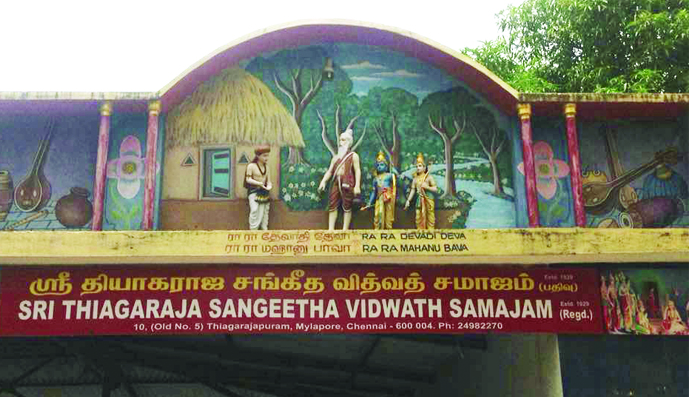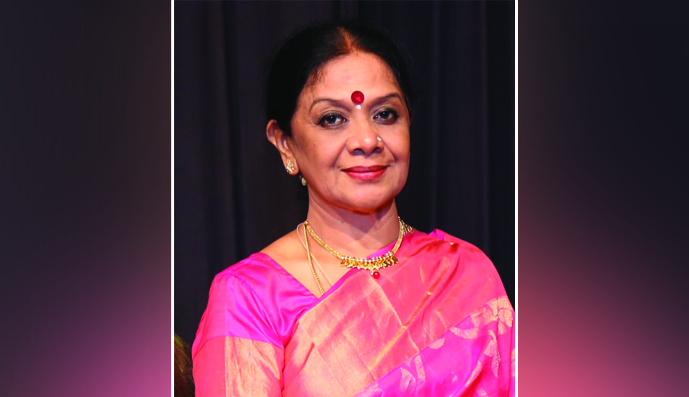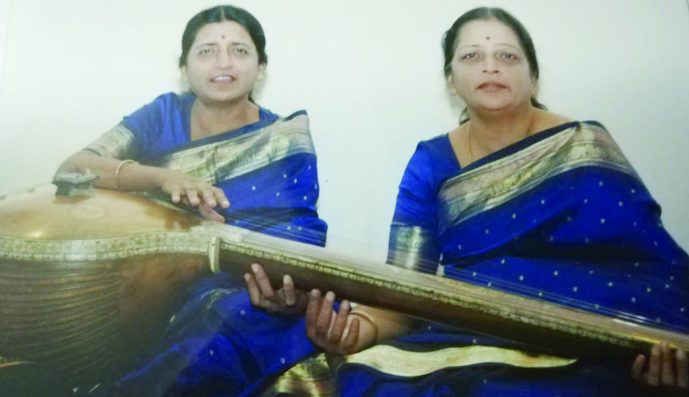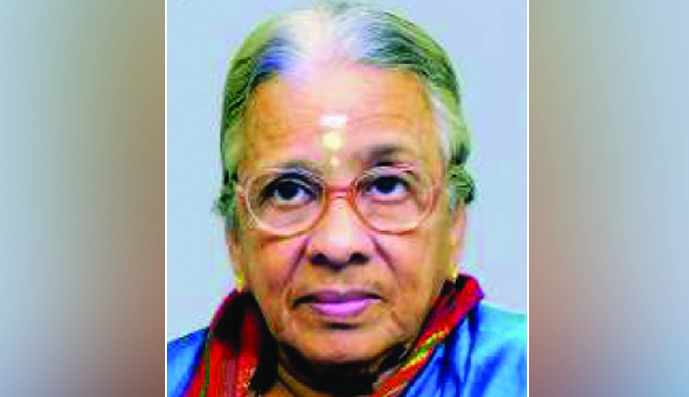Sri Thiagaraja Sangeetha Vidwath Samajam is one of the major musical landmarks in Mylapore. The history of the Samajam dates back to 1929, when musicians and music lovers wanted to conduct the Tyagaraja aradhana in Madras as not everyone could go to Tiruvaiyaru. The Music Academy too started holding concerts and conference sessions in 1929. Like any other organisation, it could not accommodate all the stalwarts in its programmes. At that point of time it occurred to Parur Sundaram Iyer that another venue of repute should be established in Mylapore. Senior musicians like Tiger Varadachariar, Harikesanallur Muthiah Bhagavatar, Parur Sundaram Iyer, and T.L. Venkatarama Iyer took the initiative which ultimately resulted in the formation of the Samajam. Sundaram Iyer, Alamelu Jayarama Iyer and V. Thotadri Iyengar met in T.L. Venkatarama Iyer’s premises at Sannidhi Street in Mylapore and decided about the formation of a sangeeta samajam. The name “Sri Thiagaraja Sangeetha Vidwath Samajam” was suggested by Parur Sundaram Iyer and the inauguration took place in 1929 on the first floor of the house owned by T.L. Venkatarama Iyer.
Tyagaraja by S. Rajam, Jayashree Rajagopalan and Hyderabad Sisters
- Issue 416
- Published By Sruti
-
₹120.00
Jayashree Rajagopalan, renowned Bharatanrityam dancer, teacher, choreographer and research scholar, is a prime disciple of Padma Subrahmanyam. She is the founder-director of Nrithyodaya Academy of Performing Arts, Mumbai, established in 1976. Jayashree has completed the Nritya Visharad and the Nrithyashali courses specialising in the study of the 108 karanas of the Natya Sastra. She has received specialised training in the art of nattuvangam and make-up technique. She is the recipient of the Senior Research Fellowship from the Department of Culture, Government of India, for a comparative study of The Marga Talas of Tiruppugazh and Manipuri Dance. She was awarded the Indal Research Fellowship by the Asiatic Society of Mumbai, for her dissertation on Role and relevance of the Lasyangas of Natya Sastra—a gender perspective. She is the recipient of the Tata-Heras Fellowship for her project work on the Impact of Natya Sastra in Ajanta Art. She is a graduate in Drawing and Painting from Stella Maris College, Chennai. Her doctoral thesis on Aharya Abhinaya as delineated in the Natya Sastra has earned her a Ph.D. She is the chief examiner, Ph.D. guide and Visiting Professor at the Centre of Performing Arts, Pune University, and she guides Ph.D. students at Tilak Vidya Peeth, Pune. Jayashree is a faculty member for the Distant Education Course in Bharatanatyam of the Sastra University, Tanjavur. She is also Deputy Director of Ananthacharya Indological Research Institute, Mumbai.
My conversation with the Hyderabad Sisters was like a breath of fresh cool air in hot, arid Telangana. It was delightful to get to know these classical Carnatic musicians in a city popular for its laid back Nizam culture, resplendent with its own dialect, a mixed bag of Urdu and Telugu thrown in for equal measure. The unassuming Hyderabad Sisters, are an amazing vocalist-duo, a neat blend of scholarship, clarity and modesty, with a deep commitment to the art form they profess. The Hyderabad Sisters were born to Saroja and B. Shivachandra—Lalitha in 1950 and Haripriya in 1952. “We are from Hyderabad, born and brought up here in this beautiful city,” they say. Lalitha is the eldest and Haripriya the second of eight siblings. They grew up in cultured environs with Saroja already well into advanced music training from the late T.G. Padmanabhan, a direct disciple of Alathur Venkatesa Iyer, from whom he learnt music along with the Alathur Brothers. The famous Alathur bani of crisp and clear singing, with beautiful improvised sancharas in raga and niraval singing has been passed on to the Hyderabad Sisters. Their father, one of the nine gazetted IAS officers in Andhra Pradesh, found time to encourage the children in all their pursuits, despite his hectic schedule.
As I entered Mela Raja Veedhi in Tanjavur, a stoic silence prevailed. I am never at a loss for words whenever I pass through the palace area reminiscing about great personalities and incidents connected with it. But that day, my heart was heavy as I was returning after paying my last respects to the great Harikatha exponent T.R. Kamala Murthy. As I approached Baloba lane, I asked my nephew to slow down where Kamala Murthy had lived. Memories of Mami raced through my mind; it was difficult to accept the passing away of the favourite, lovable, precious daughter of Tanjavur. When I entered the house on the outskirts of Tanjavur that morning, it was the first time that I was not welcomed with the trademark greeting of “Ram, Ram” in that deep voice of hers. The small gathering of local artists including Mythili Kannan, T.K. Ramachandran, and Veenai Ramdas, who were there to pay their last respects, were all in tears as they narrated their personal experiences with Kamala Murthy. She was an embodiment of bhakti and had regaled innumerable rasikas with her gripping stories. Born in 1932 in Tanjavur, Kamalamba, was an intelligent child who could grasp anything she heard at the first instance, she was an ‘ekasantagrahi’. She moved to Chidambaram with her maternal grandfather at a very young age. Raja Bhagavatar, who taught music in the neighbourhood, heard the eight-year old Kamalamba sing the compositions that he was teaching his student. Impressed with her talent, he decided to groom her in the art of kathakalakshepam.
CONTENTS Vol.
26 Issue 5 May 2019
6 Sruti Box
8 News & Notes
11 Snapshorts
12 Birthday calendar
14 Sri
Thiagaraja Sangeetha Vidwath Samajam
22 Jayashree
Rajagopalan
32 Hyderabad
Sisters v Lalitha
and Haripriya
40 Analysis v Sri Narasimha mam pahi
44 Tributes v Kamala Murthy v Neranki Vishnu Murthy
50 From the
Editor
Front Cover: Tyagaraja by S. Rajam
Jayashree Rajagopalan and Hyderabad Sisters






